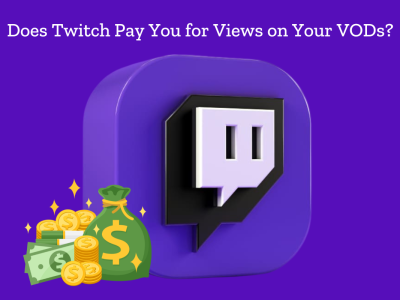
Let’s face it – diversity and inclusion have become massively important issues for companies these days. And for good reason! Diverse teams are smarter, more innovative, and straight-up more profitable.
Moving the needle can be tough though, especially in industries dominated by one type of employee demographic.
But here’s the thing – social media gives companies a way to highlight diversity and promote an inclusive environment. Platforms like LinkedIn, Twitter, and Instagram are perfect for showing off your diverse workforce.
In this article, we’ll look at proven tactics to improve diversity management through social media engagement. With strategic posting and a little creativity, you can transform your company into a shining example of inclusion. Let’s dive in!
Benefits of Workplace Diversity
Let’s talk benefits of having a diverse workplace. Bringing in people from different backgrounds leads to some pretty sweet outcomes:
- More innovation – Groups with diverse perspectives bring unique viewpoints to the table, sparking those “lightbulb” moments and pushing outside the box.
- Better financials – Studies show diverse companies get 19% higher revenue from innovation.
- Recruiting magnet – Top talent today wants diversity and flows toward inclusive workplaces.
- Happier employees – When people feel respected for their differences, they deliver their A-game.
In other words, diversity provides a triple boost by harnessing different perspectives. It drives innovation, fattens financials, and engages employees. The data shows a diverse team wins every time. Bringing together varied backgrounds, experiences, and ideas sets companies up for success.
Challenges to Achieving Diversity
While diversity seems like a no-brainer, making it happen has its challenges. Many companies struggle with unconscious bias in hiring and promotions that favors dominant groups. Leadership teams and boards often lack diversity, making supportive policies tough to implement.
Company culture can also get stuck in traditional norms that don’t value diverse voices. These factors perpetuate homogeneity and exclusion. Pushing past them takes intention, effort, and sometimes outside help. The path to diversity means acknowledging and addressing systemic obstacles.
Moreover, achieving true diversity requires digging deeper to identify and tackle roadblocks. For many organizations, diversity initiatives fail to create meaningful change because they don’t confront underlying issues. To make progress, companies need to look at factors like:
- Biases baked into talent recruitment and development processes. This can lead to one-dimensional workforces.
- Lack of diversity at senior levels and on company boards. This results in tone-deaf policies.
- Exclusionary workplace cultures that isolate underrepresented groups. People won’t thrive if they don’t feel welcome.
- Failure to educate leaders on leading diverse teams. Many managers lack training to support inclusion.
Using Social Media to Promote Diversity
Social media presents excellent opportunities to promote diversity and inclusion efforts. But truly making a difference requires thoughtful strategy and sensitive execution. Here are some impactful approaches with real-world examples:
- Share Authentic Stories from Diverse Employees
Sharing video testimonials and posts that provide glimpses into the personal journeys, cultures, and proudest moments of employees from underrepresented groups helps humanize differences and build empathy. For example, have employees share how their backgrounds shaped their career paths or the unique strengths they bring to the workplace. But ensure proper consent before disclosing personal information. Avoid tropes or generalizations – the goal is to foster deeper understanding between colleagues.
- Discuss Ongoing Diversity Initiatives
Discussing training programs, speaker series, outreach partnerships, and other diversity initiatives to engage both employees and the public. Don’t just announce activities – provide meaningful details, quotes, and takeaways that energize others to join the momentum. For example, share feedback from a cultural awareness workshop, so people understand the conversations and learnings being generated. Avoid self-congratulatory language – the focus should be encouraging ongoing participation.
- Amplify Marginalized Voices
Partnering with influencers from underrepresented groups to co-create content allows you to empower and signal boost. But don’t just give them a platform – compensate them for their labor and lived expertise. Progress requires handing the mic to those with firsthand experience. For instance, you could work with disability advocates on a blog series about improving workplace accessibility through reasonable accommodations and inclusive policies.
- Measuring Impact and Results
When executing any diversity initiative, it’s important to measure impact. With social media efforts, look at engagement metrics like reach, likes, clicks, and comments to see what content and messaging resonates. Are certain posts prompting more shares or discussion? Dig into the data to refine your approaches over time.
You can also track website traffic, job application rates, employee survey feedback, and other metrics to gauge whether social media efforts are moving the needle on diversity at your organization. Measurements should focus on tangible culture and business impacts, not just vanity metrics.
- Putting it All Together
The bottom line is that diversity, inclusion, and belonging are multifaceted issues requiring sustained commitment. While social media presents opportunities, lasting change comes from examining and evolving company values and culture.
Authentic and thoughtful use of social platforms provides additional avenues to engage employees and the public in this work. By humanizing differences, energizing action, and empowering marginalized groups, organizations can make real progress.
But it requires acknowledging areas for improvement, adjusting ineffective approaches and investing time and resources. The strategies discussed give a roadmap to get started, but the real rewards come from sticking with it for the long haul.
At the end of the day, diversity, equity, and inclusion is about values. And social media is merely a vehicle for living those values consistently in order to build a workplace where everyone thrives. It’s not easy, but it’s worthwhile work.
In Summary
Let’s recap. Workplace diversity has obvious business and social benefits. But deep-rooted obstacles get in the way, requiring intention and elbow grease to tackle. Social media can help promote diversity and inclusion in an authentic way. But real change happens when companies dig into their culture and values.
The strategies here offer helpful starting points. But the real work is staying committed over the long haul to create an equitable environment. One where every employee feels welcomed, valued, and empowered to do their best.







